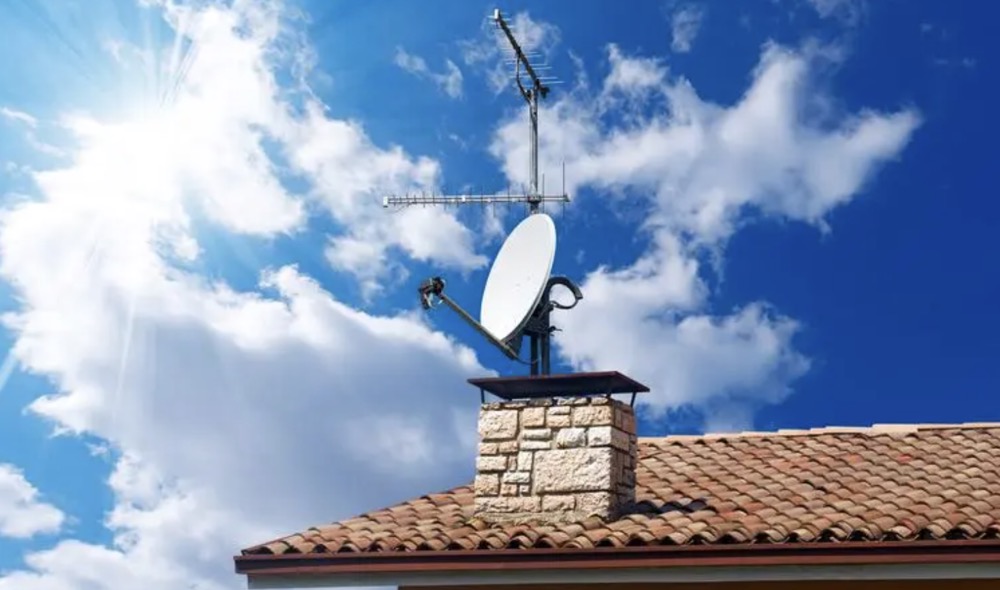This minHour teaches you how to select and set up an antenna for your TV.
Preparing Your Equipment
Determine your television’s antenna connector type.
Virtually every TV has an antenna input on the back or side; this is where you’ll plug in the antenna. There are two main versions of this input:
- Coaxial RF – Resembles a threaded cylinder with a hole in the middle. This type of connector is the standard for most modern TVs.
- IEC – Resembles a smooth cylinder with a smaller cylinder inside of it. You may find this connection on old CRT TVs.
- Check your TV’s manual or look up its model number online to double-check the antenna type.
Figure out the location of the nearest broadcast station.
You can typically do this by typing in your location and “tv broadcast station” into Google. This will give you an idea of the type of antenna that you’ll need; for example, if the closest station is relatively far away, a standard set of “rabbit ears” won’t be ideal.
- You can also enter your address into a site like http://antennaweb.org/Address to see a map of nearby broadcast stations.
- Knowing where the broadcast station is will also ensure that you know which direction to face the antenna if necessary.
Buy an antenna for your TV.
If you don’t already have an antenna—or if you need a more powerful one—buy one online or in a tech department store. You have a few options when it comes to antennae:
- Flat – The most recent rendition of antennae, a flat antenna requires very little fine-tuning after being plugged in next to the TV. Flat antennae also have superior range and reception in relation to other more traditional antennae.
- “Rabbit ears” – A set of two telescoping antennae, the “rabbit ears” antenna set is one of the most common types used in households. These usually go behind the TV. The “rabbit ears” set is fine if you’re close to a broadcast station.
- Whip – One telescoping antenna. Whip antennae are similar to “rabbit ears” antennae in function and placement.
- Outdoor (UHF) – Large, multi-element antennae that are usually mounted on the roof or in the attic. These are ideal for making long-range connections if you live in a remote location.
Buy an extension cable if necessary.
Especially if you’re mounting an antenna outside, you’ll need a coaxial cable that can reach from the antenna to your TV. You can usually find these online or in tech stores.
- You may want to buy a small extension cable for an indoor antenna if your TV doesn’t have enough space for an antenna behind it.
Connecting and Adjusting
Turn off and unplug your TV.
Press your TV’s “Power” button, then remove the plug from the back of the TV or from its electrical outlet. This will prevent you from accidentally harming your TV or antenna.
Connect the antenna to the input port.
Find the antenna port on the back of your TV, then plug in the antenna and tighten the connector (if possible).
- If you’re using an extension cable, connect the cable to the antenna as well as the TV’s input port.
Plug back in your TV and turn it on.
Depending on your current channel, you may already be receiving broadcasts from local stations.
Scan for channels.
This step will vary from TV to TV, so consult your TV’s manual or online instructions for how to do this. In general, though, setting your TV’s input to “TV” and flipping through channels should do the trick.
- If you know your local channels’ exact numbers, try navigating to one of them with your TV’s input set to “TV”.
Adjust your antenna as needed.
If you have a directional antenna, such as a “rabbit ears” set or a roof-mounted antenna, you’ll want to point it toward the nearest broadcast station. You may also need to move items in your home out of the way of the antenna’s connection path.
- Adjusting your antenna is a trial-and-error experience, so don’t worry about getting it right on the first try.
- Generally speaking, you shouldn’t have to adjust a flat antenna very much, since they’re both more powerful than traditional antennae and multi-directional.
Finished.
Tips
- If you constantly have to readjust your roof-mounted antenna, you can buy an electric rotor that allows you to adjust the antenna from the comfort of your home.
- The RF input on your TV is the same input that you use for cable TV.
- If you’re running a cable outside or through your house, make sure that the cable is shielded. This will ensure a higher level of quality on your TV, and the cable will be less prone to breaking or succumbing to the elements.
Warnings
- Avoid any set-top antenna that is shaped like a satellite dish and claims to pull in hundreds of channels with no cable fees using “RF technology”—that is just a deceptive way of describing any antenna. You can only receive the broadcast channels within range.
